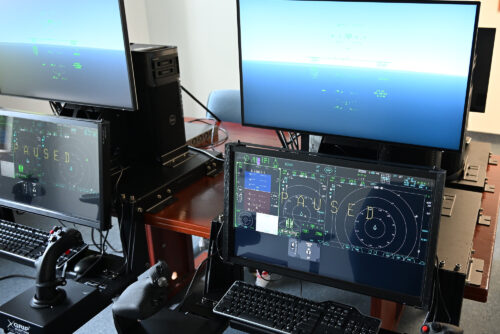The Naval Air Warfare Center Aircraft Division (NAWCAD) has successfully deployed a new training capability known as ‘Simulators at Sea’ aboard the USS Abraham Lincoln (CVN 72). This innovative system allows aviators across the carrier’s air wing to train together in advanced simulators, even while deployed.

Previously, joint mission training on this scale was significantly limited due to the risks involved in practicing wartime scenarios, the high cost of flight operations, and the potential for exposing tactics to adversaries. Simulators at Sea offers a safer and more efficient alternative, enabling aviators to rehearse naval missions, including complex wartime scenarios, without leaving the ship.
Aviators with Lincoln’s Carrier Air Wing (CVW) 9, flying platforms including the F-35C Lightning II, F/A-18 E/F Super Hornets, EA-18G Growlers, and E-2D Hawkeyes, are the first to deploy and rehearse naval missions, including wartime scenarios, with the new simulation system since last month.
“This training is a game-changer that keeps our forces the most dominant in the skies,” said NAWCAD Commander Rear Adm. John Dougherty IV. “Simulators at Sea brings American aviators a level of readiness our carrier air wing has never experienced while deployed.”
The Simulators at Sea system features connected desktop trainers that enable aviators from different aircraft squadrons to practice missions together. This allows them to develop coordination and teamwork skills that are essential for effective combat operations.
The successful deployment of Simulators at Sea aboard the USS Abraham Lincoln marks a significant milestone in the Navy’s efforts to modernize its training capabilities. The warfare center plans to expand this technology to other carriers in the future, ensuring that naval aviators have access to the most advanced training tools available.
For more information, hit the Source below